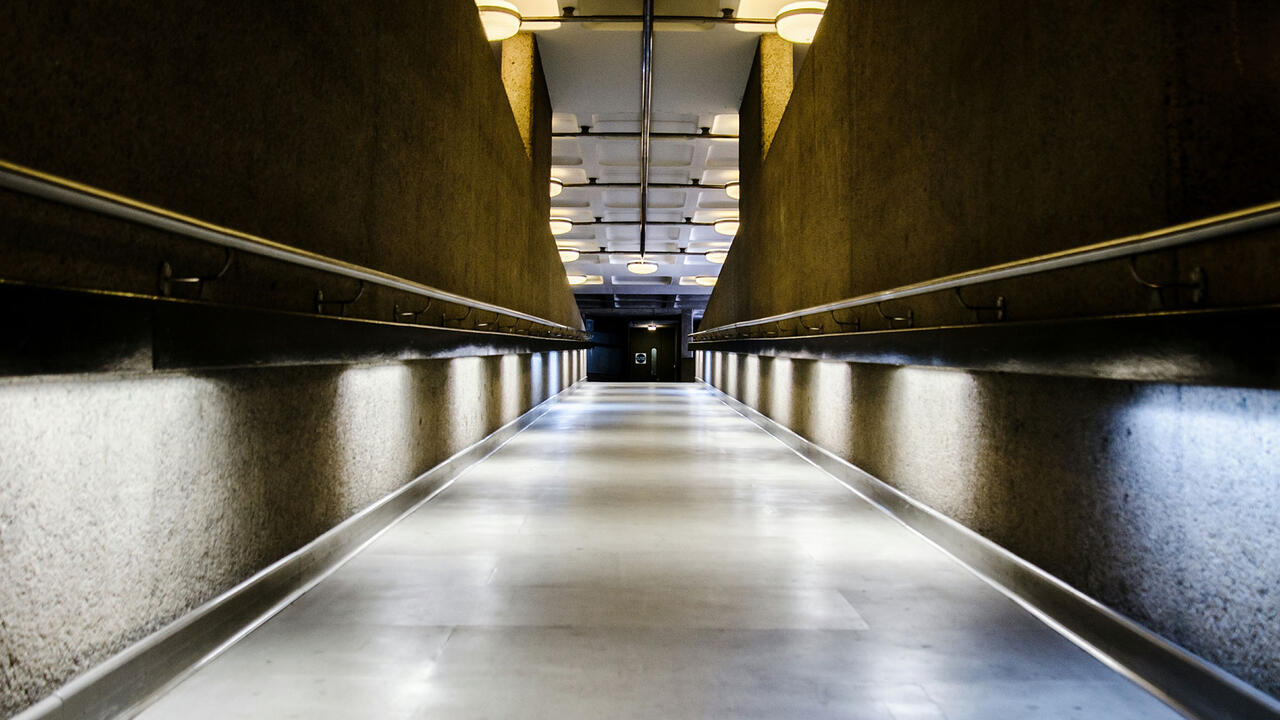John Cage
BALTIC Centre for Contemporary Art, Gateshead, UK
BALTIC Centre for Contemporary Art, Gateshead, UK

It is often said that John Cage’s disordering exercises and chance operations have had a more enduring influence on artists than on composers. Despite following Arnold Schoenberg’s orders in 1933 to drop art in favour of composition, Cage maintained a close connection with the art world: in 1941 he was invited by Moholy-Nagy to teach in Chicago, the year he befriended Marcel Duchamp while staying in Max Ernst and Peggy Guggenheim’s apartment (‘I literally believe that Duchamp made it possible for us to live as we do’, he said many years later); his first major concert was two years later, not in a concert hall, but at the Museum of Modern Art, New York. This affinity was recognized by Michael Nyman, in his influential essay ‘Towards (a Definition of) Experimental Music’ (1974), when he argued that: ‘Cage’s crucial decentralization of music and physical space brings music more into line with painting.’
So it’s a little surprising that Cage’s visual art, most of which he produced towards the end of his life, is not better known. In 1978, aged 65, he accepted an invitation for a residency at Crown Point Press in San Francisco; between then and his death in 1992 he produced more than 600 prints, as well as almost 300 drawings and watercolours. Quiet, elemental and layered, most of these works were made according to the chance operations that had been central to Cage’s approach since the early ’50s, when he had been introduced to the I Ching by his young student Christian Wolff.
For ‘Every Day is a Good Day’, the first ever retrospective of this late work, curator Jeremy Millar has applied Cage’s own indeterminacy theories to the selection and arrangement of the show itself (the title, sunny and indiscriminate, was a favourite Zen maxim of Cage’s). The exhibition, which is organized by Hayward Touring – though Millar notes in the catalogue that it should be considered ‘more as a series of events than simply a show that travelled, unchanging, around the country’ – and is currently showing in Kettle’s Yard in Cambridge, gathers as much of these late works on paper as was available. Each iteration is dependent on a computerized version of the I Ching – Cage himself used the same thing in later life – according to which the selection, placement and groupings are decided upon. As each institution is permitted to re-hang the work throughout the duration of the exhibition, ‘Every Day is Good Day’ remains in flux – a rare example of curatorial delegation suggesting thoughtfulness rather than an overstuffed diary. Indeed, Cage himself worked on several exhibitions that presented his own and others’ art works in accordance with chance operations. The most prominent of these was ‘Rolywholyover, A Circus’ (the title is a portmanteau from Finnegans Wake, 1939), which he devised with Julie Lazar, a founding curator of the Museum of Contemporary Art in Los Angeles. Cage hoped this ‘composition for museum’ would produce an exhibition that was completely unrecognizable from visit to visit (‘Rolywholyover’ was eventually mounted in 1993, a year after his death).
When I visited BALTIC, around 100 works were hung on three walls, anywhere between knee-height and the ceiling. They were partially tessellated, as though they’d been initially arranged in a dense salon-style, with many removed later. These prints incorporate a wide range of techniques, and are made on paper that has been subjected to various treatments: burnt, stained, smoked, even branded with a hot tea pot. The earliest works shown here predated the Crown Point residency: titled ‘Not Wanting to Say Anything About Marcel’ (1969) and made a year after the death of Cage’s friend and chess partner Duchamp, this earliest series of lithographs was composed according to the I Ching but executed by a student of Cage’s (‘just as I would write a piece for a pianist and she would play it’). Cage’s quick development as a print-maker is obvious from the series ‘Seven Day Diary (Not Knowing)’ (1978), made during his first residency, in which seven different techniques are used over the course of a week, each drawn (with his eyes closed) directly onto copper plates. The other key works (in the show’s first version, at least) included the ‘Where R = Ryoanji’ series of drypoint prints (1983), named for and inspired by the celebrated rock garden in Kyoto, and the wonderfully lambent late ‘HV2’ series (1992), for which rectangles of copper were selected from the studio’s scrap pile and etched briefly with aquatint.
Although the main focus here was the works on paper, there was also a small archive and a recreation of the extraordinary installation HPSCHD (1969). First staged at the University of Illinois, this collaboration with composer Lejaren Hiller originally utilized dozens of projectors, with hundreds of slides (loaned from NASA) projected onto a 100-metre-wide screen. Necessarily scaled down at BALTIC, these aerial views, chromatic patterns and Brakhage-esque painterly abstractions were backed by recordings of amplified harpsichords and cacophonous, computer-generated variations on classical music.
Cage’s adoption of rules-based structures and chance operations grew out of a preference for anonymity or selflessness over self-expression. He wrote that Music for Changes (1951), which was composed by tossing coins to determine pitch, duration and attack, has ‘the alarming aspect of a Frankenstein monster’ – a composition more inhuman than human. Most surprising about the works assembled for ‘Every Day is a Good Day’ – and, inevitably, about the exhibition itself, which was animated by these same indeterminacy theories – is their unhurried expressiveness, their alloying of chance and time into something unmistakably human.
























